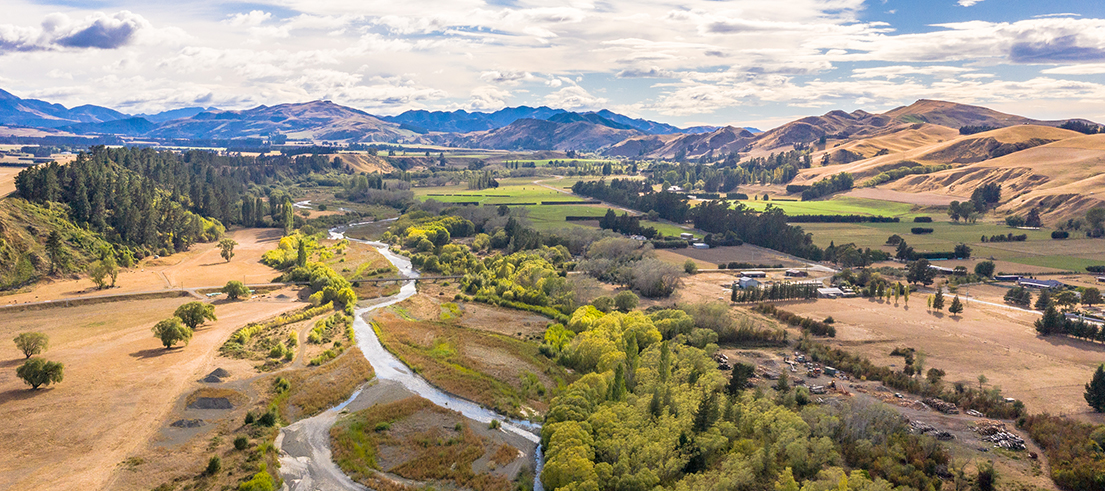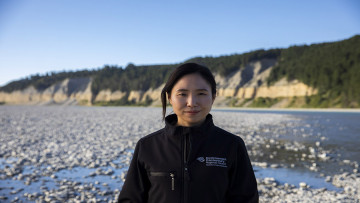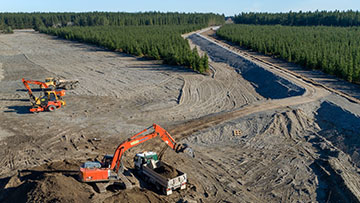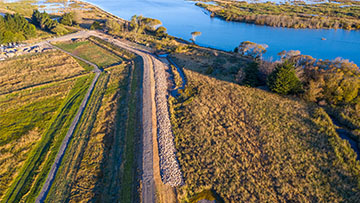
River engineers – making a difference in Aotearoa’s waterways
Councils from all over New Zealand have recently teamed up to attend careers fairs and talk to students and graduates about summer internships. Our rivers team attended the STEM Careers Fair at the University of Canterbury on 6 May to talk about what a career working in rivers is all about.
Ki uta ki tai - from the mountains to the sea
Ki uta ki tai/from the mountains to the sea, Aotearoa’s braided rivers are important and iconic taonga/treasures that shape our landscape and identity.
Canterbury is especially known for its wide braided rivers across the Canterbury Plains formed by glaciers as sediment and gravel were swept down from the Southern Alps fanning out into many strands on gravel plains.
Globally, braided rivers are rare. Characterised by their shifting channels and banks, varying water flows and movement across the landscape they are highly distinctive.
They provide a vibrant ecosystem for many rare birds, fish, plants and other species, sustaining the mauri/life force of braided river systems and forming a vital ecological link from the mountains to the sea.
Find out more about the importance of braided rivers and how we protect them.
Changing the way we think about rivers
Over time, and with historical use and development, some of the ecological and biodiversity values of these special rivers have deteriorated.
With increasing government focus on climate resilience and the introduction of Te Mana o te Wai by the Ministry for the Environment – a concept that prioritises the health of our waterways, the well-being of our rivers is increasingly in the spotlight.
This means that the work of river teams in councils across Aotearoa is gaining attention and opportunities for graduates to enter this innovative field of work and make an impact in their community are on the rise.
Historically, new recruits came from a civil and natural resources engineering background but these days candidates for working with the rivers team could equally come from environmental sciences, hydrology and related disciplines like forestry and surveying.
Cantabrians at risk from flooding
Perhaps the most challenging hazard we face in the coming decades is flooding with the expectation of more frequent and intense climate-change induced flood events in the future.
Historically, engineers relied on structural works to protect the towns and cities that sprang up on fertile grounds near rivers valued for irrigation, recreation and transport.
These days a more holistic approach is used. Alongside solutions such as stopbanks, groynes and gravel management there are many opportunities to utilise natural infrastructure such as riparian planting and wetlands that can also support important cultural and biodiversity outcomes in our rivers.
In a significant funding boost for Canterbury's rivers, more than $24 million will be spent between 2021 and 2023 on a wide-ranging programme of flood protection projects thanks to central government’s climate resilience fund.
Working alongside Ngāi Tahu, our Treaty partner, to deliver effective outcomes for Māori is a key part of this work.
Summer student programmes
Our rivers team manages 59 river control and land drainage schemes that collectively cover over 1,000km of rivers, many smaller streams and over 760km of rural open drains. It also manages a 663km network of stopbanks.
The rivers team takes on a diverse range of jobs from design for flood control and drainage, asset management, flood and natural hazard management, gravel resource management and erosion and plant pest control.
Sophie's internship success
Sophie Warhurst worked for us as a summer intern following completion of her Bachelor of Forestry Science from the New Zealand School of Forestry at the University of Canterbury.
“The student programme is awesome, it gives you a taste of ECan and if you’re doing fieldwork it’s a chance to prove yourself if you work hard”, she said.
Sophie has a passion for making a difference in her environment and spent her time working on a project to improve Canterbury river berms (vegetation along the side of rivers) for native biodiversity, flood protection, erosion, recreation, and mahinga kai values.
“These values are all in my best interest as a kaitiaki of our environment” she says.
“I really value that Environment Canterbury has a duty to include tāngata whenua voices in environmental regulation and I am very lucky to be at a workplace that can allow me to go to kapa haka and participate in te reo lessons.”
Isobel's internship success
Fellow intern Isobel Halliday, who completed a Bachelor of Engineering in Natural Resources and a Diploma in Global Humanitarian Engineering at the University of Canterbury agrees that summer roles at Environment Canterbury are really valuable.
“I’ve been learning a lot more about Canterbury waterways, and ECan’s role in monitoring and managing them. One thing that’s been a challenge is learning to use the AutoCAD Civil 3D program to show stopbank alignments and perform analysis on them – I didn’t get the chance to learn to use this program at uni, so it’s been a big learning experience!”.

Su Young Ko | Senior River Engineer - Climate Resilience Programme talking about building resilience to floods.


